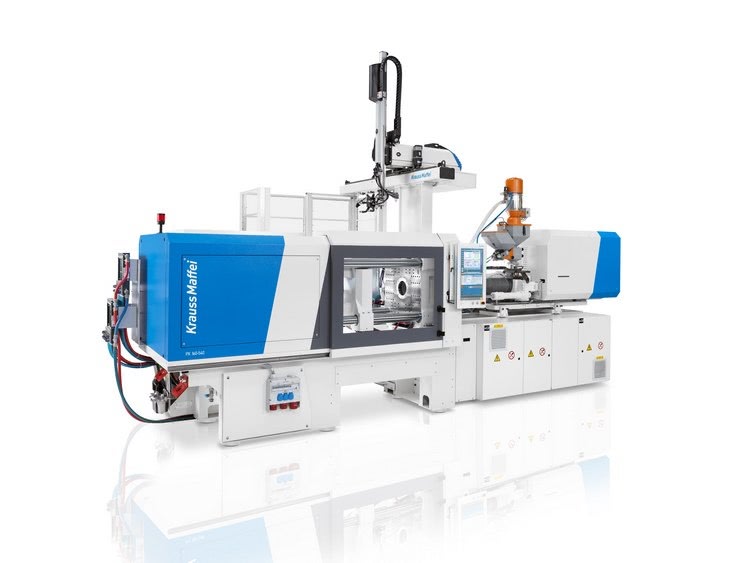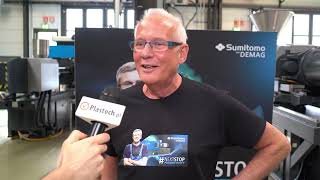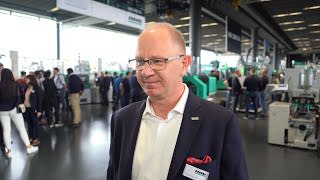PX 160-540: Faster tempo with thin-walled snap-on enclosures
Thin-walled parts need power during injection. The PX 160-540, the machine on which flip-tops of the Fontane type are being manufactured during Fakuma, thus has a boosted injection speed of 270 mm/s. The sealing caps, made of polypropylene, have a diameter of 28 mm and are designed with the short thread 1881 - making this a classic packaging application. "The high output quantities in this area require especially short cycle times. Therefore, the PX 160 is equipped with speed options: faster injection, faster ejection, increased torque and faster nozzle movement," Mitzler continues. The compact automation system with LRX 100 linear robot removes the covers from the mold and places them into an integrated automation unit in which they are closed. The bottom line is that this saves time and space compared to familiar solutions on the market such as in-mold closing and separate covering process.The LRX 100 is part of the new generation of small linear robots from KraussMaffei, which feature a new, progressive design with decentralized control cabinet concept and freestanding X-axis. They offer high flexibility in processes such as simple retrofitting of sensors or expansion of media circuits. Rack-and-pinion drives used in place of toothed belts offer fast, high-precision movements in all axes. A revised thermal and protection concept for electronic components with a Class IP54 rounds out the new concept and offers high uptime and safety. The removal gripper is 3D-printed and thus lightweight and design-optimized.

Unmatched cycle times for the packaging industry: Flip top snap-on closures are produced on a PX 160-540 with LRX linear robot
CX 200-750: More freedom in design thanks to inductive mold heat-balancing
For its demonstration at Fakuma, KraussMaffei will collaborate with partner Roctool (HD plastics). The demonstration will show how impressive surface effects can be achieved without additional post-mold finishing. For example, this is how 16 various surfaces and thus 16 design variants of a plastic game console housing are created on a CX 200 in a 16-cavity mold. "The design options of the technology are immense - no matter whether color shading, hologram effects, high gloss effects or matte effects - everything can be completed in the one-shot process without additional post-mold processing such as film decoration or (secondary) painting," explains Mitzler.The CX 200 from KraussMaffei scores points in this application with its outstanding performance as an extremely cost-effective and precise two-platen machine. This includes, for example, the drive concept according to state-of-the-art technology (IE3 types) as well as the energy-efficient BluePower servo drive. An active accumulator management system completes the overall concept. As a two-platen machine, the CX series requires less installation area than longer three-platen models. Under the clamping unit, it provides space for peripheral devices and all kinds of demolding systems. During Fakuma, an LRX 150 of the new generation of linear robots will demold the components. In the next step, the component and the sprue are separated. Finally, the bagging and packaging are carried out. Thanks to the space-saving design, this can be completed within the protective enclosure and saves on the footprint required for infeed.
Source: Krauss Maffei Group



